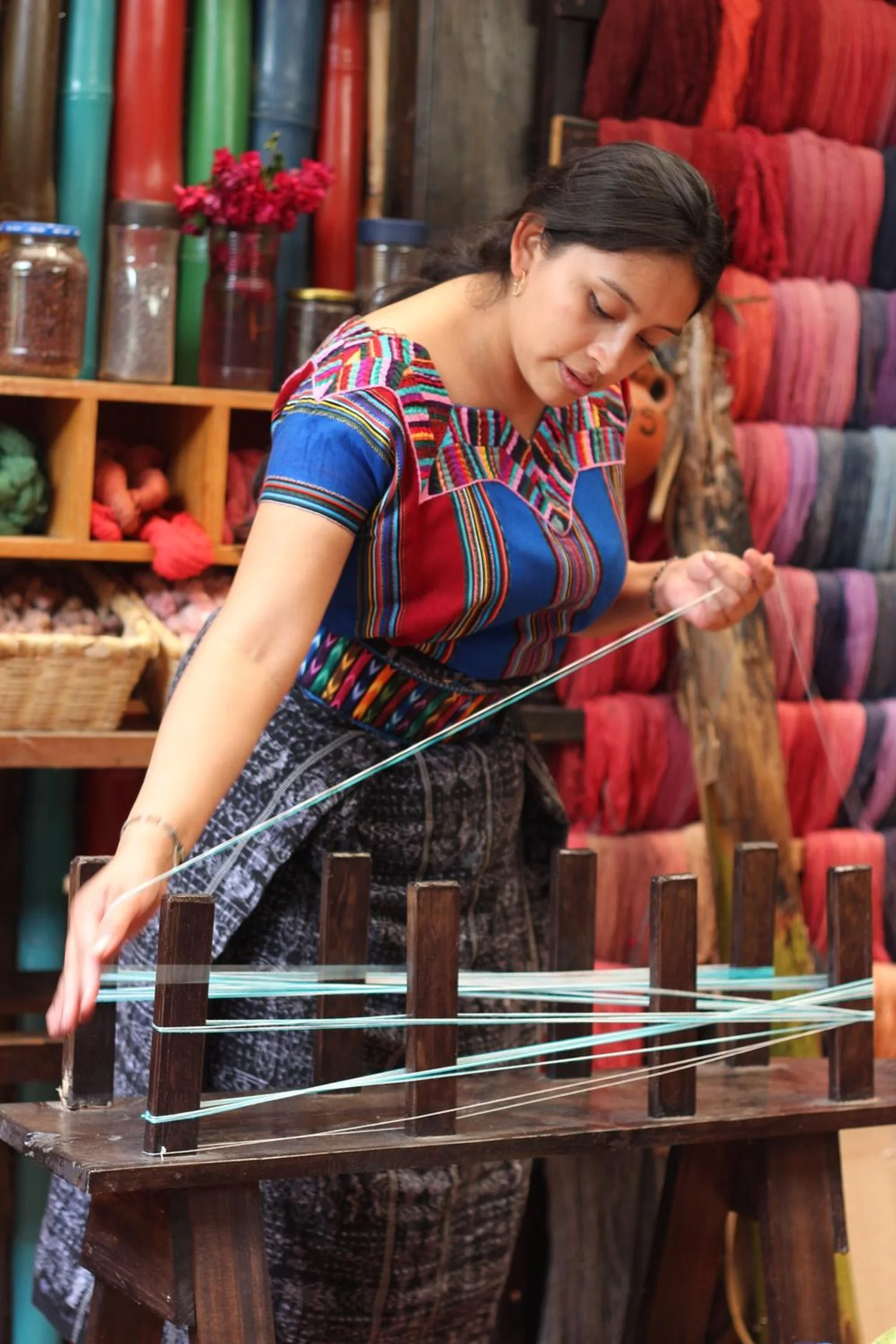Fabric of Life
Woven into the threads that make up the garments we wear is a rich story. Typically, we do not have the privilege of knowing who made our clothing. But what if we did? What would they tell us, and how would our interaction with that piece impact their life?
The village of San Juan la Laguna is nestled on the shores of Lake Atitlan in the heart of the Mayan region and present day Guatemala. Textile culture is still vibrant in this part of the world. Towns abound with brilliantly coloured, hand-woven fabrics, and many Guatemalan women still wear their traditional dress. San Juan, in particular, is filled with artisans and collectives. Also a common tourist destination, the streets are lined with signs inviting visitors inside for demonstrations on weaving and natural dyeing.
One such studio I visited was Casa Flor Ixaco, where I had the pleasure of experiencing a presentation by Daphne, a local Mayan woman and a key member of the cooperative. Working in this cooperative has not only provided the women with an income, it has also enabled them to continue creating in the traditional manner. By collectivizing their efforts, they are able to create more efficiently, for example by dyeing twice a year in large quantities, rather than repeating the same process multiple times in smaller batches.
These women are working completely by hand, competing with multinational companies and highly mechanized factories that are also exporting from the region. While Daphne was demonstrating the weaving process on the backstrap loom, a visitor from the group asked why they chose not to used mechanized looms, as these would be much faster. She responded simply,
“This is who we are. This is our culture.”
Women have been weaving in this way for hundreds of years, weaving their sorrow and their joy, their love and their heartbreak into pieces of clothing and blankets that have warmed friend and foe alike.
Whether woven by a woman like Daphne or a young Bangladeshi girl working in a stifling factory, each textile holds the imprints of those who brought it into existence. While much of this process is obscured from our view, the clothes still carry these stories.
As holders and wearers of these pieces, we are in a special position to respect all that has gone into their creation and to continue their story forward. To honor those that have held the cloth before us and to preserve the materials that surround us, doing all in our power to lengthen their lifespan and conserve their value.

